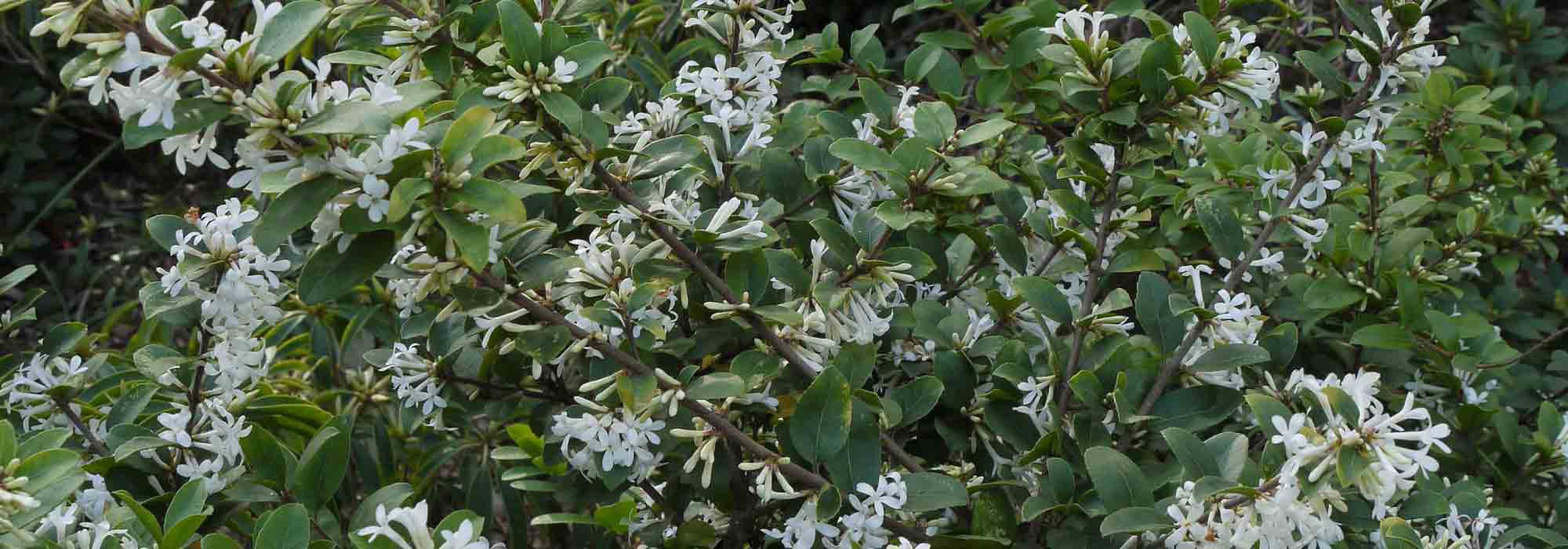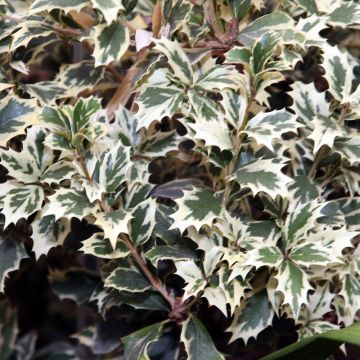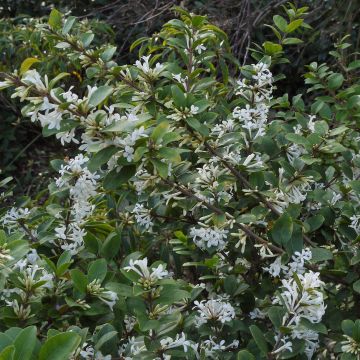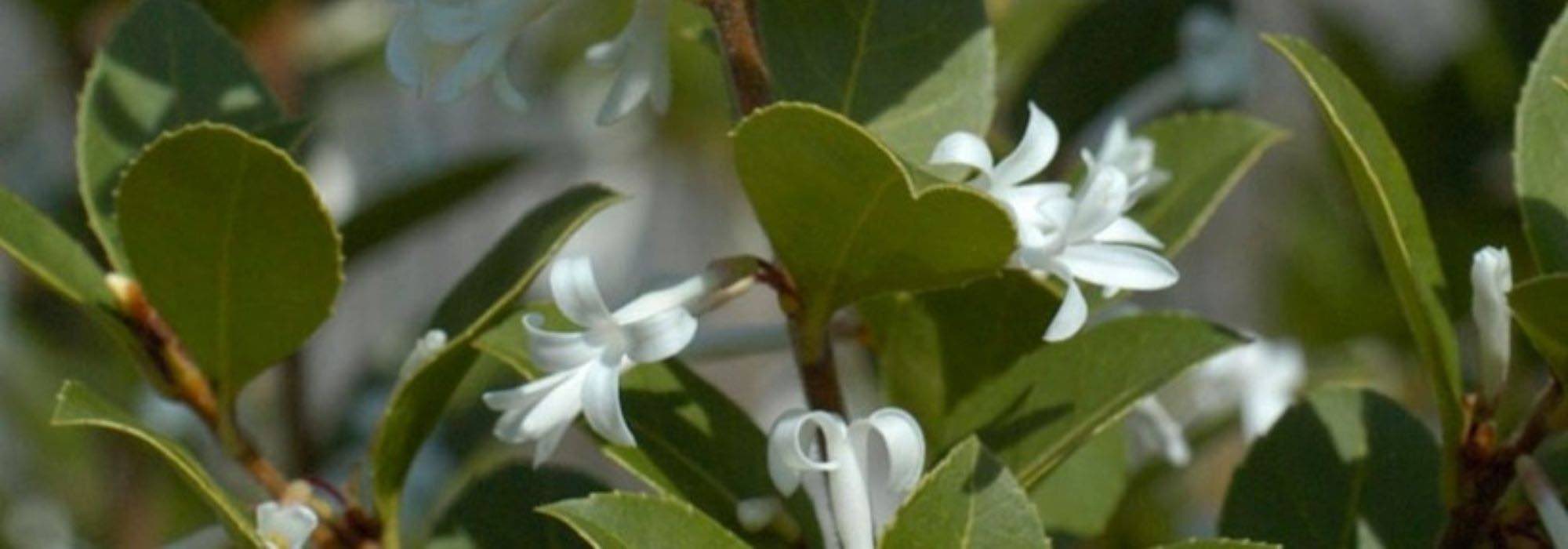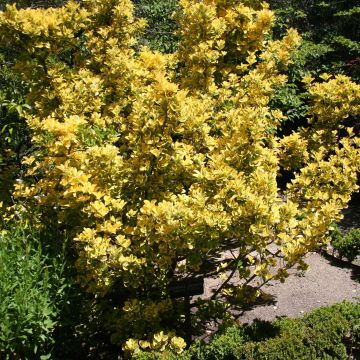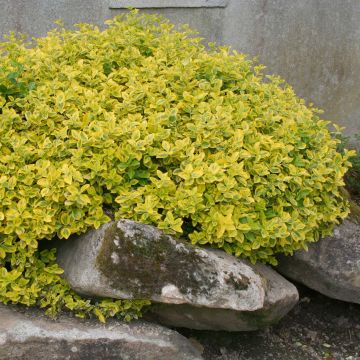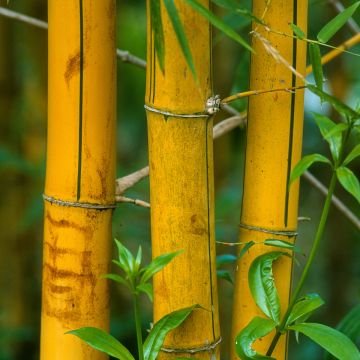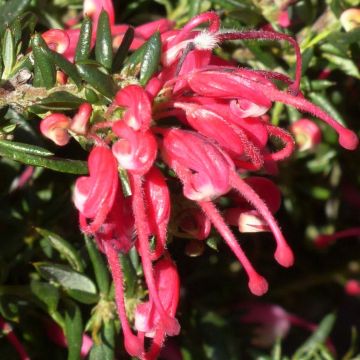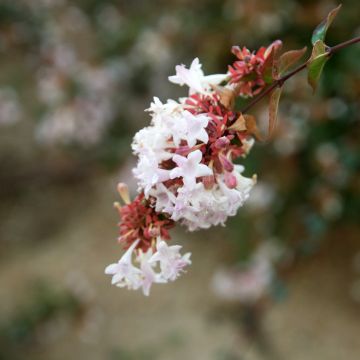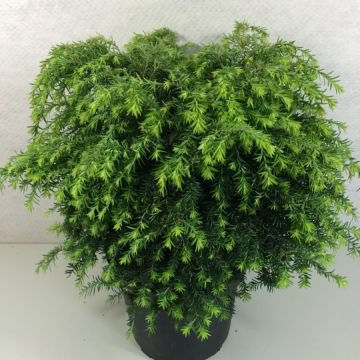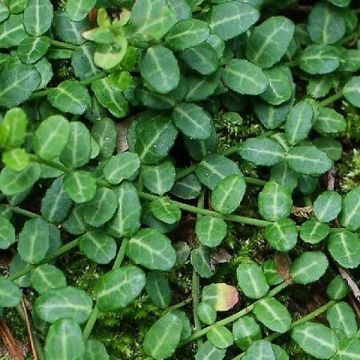

Osmanthus heterophyllus Purpureus


Osmanthus heterophyllus Purpureus
Osmanthus heterophyllus Purpureus
Osmanthus heterophyllus Purpureus
Holly Olive
Plant matches the description, well packaged.
Jean-Louis, 03/04/2025
Special offer!
Receive a €20 voucher for any order over €90 (excluding delivery costs, credit notes, and plastic-free options)!
1- Add your favorite plants to your cart.
2- Once you have reached €90, confirm your order (you can even choose the delivery date!).
3- As soon as your order is shipped, you will receive an email containing your voucher code, valid for 3 months (90 days).
Your voucher is unique and can only be used once, for any order with a minimum value of €20, excluding delivery costs.
Can be combined with other current offers, non-divisible and non-refundable.
Home or relay delivery (depending on size and destination)
Schedule delivery date,
and select date in basket
This plant carries a 24 months recovery warranty
More information
We guarantee the quality of our plants for a full growing cycle, and will replace at our expense any plant that fails to recover under normal climatic and planting conditions.

Would this plant suit my garden?
Set up your Plantfit profile →
Description
Osmanthus heterophyllus 'Purpureus', a very beautiful form with purple foliage of the variable-leaved Osmanthus, is an evergreen bush that is as colourful as it is pleasantly fragrant. Its ornamental value, while comparable to that of holly, surpasses it with the almost red colour of its youngest leaves, as well as its white flowering that spreads a beautiful jasmine fragrance with fruity notes at the end of the season. With its dense habit, prickly, dark, shiny, and colourful foliage, it is attractive all year round and is perfectly suited for creating medium-sized hedges that are evergreen, fragrant, and defensive. Variable-leaved Osmanthus is a bush that tolerates pruning perfectly and is suitable for beginner gardeners or those lacking inspiration. Plant them in ordinary soil, in all exposures, in all our regions!
Osmanthus heterophyllus, also known as Variable-leaved Osmanthus, is a hardy bush that can withstand temperatures below -15°C (5 °F), native to Japan and Taiwan. It belongs to the large and diverse family of Oleaceae, which includes, for example, olive trees, lilacs, and jasmines. 'Purpureus', a natural mutation of the species, differs only in the colour of its foliage, which is particularly purple in the juvenile stage.
The growth of this bush is quite slow, but faster than that of holly. It has a dense, bushy habit, taller than wide, reaching approximately 2.50m (8ft 2in) in height and 1.75m (5ft 8in) in width when mature. In very favourable conditions, it can exceed 3m (9ft 10in) in height and 2m (6ft 7in) in width. The evergreen foliage is composed of ovate, thick, and leathery leaves, strongly serrated at the edges, spiny, resembling holly leaves. They measure 4.5 to 6cm (1.8 to 2.4in) long and 3cm (1.2in) wide. The shiny leaves change from red to purple and then to a forest green with varying shades of purple. They are pubescent and lighter underneath. From September to October, small clusters of white flowers in the shape of short tubes appear on the new shoots, in the axils of the leaves. They measure 2 to 5mm (0.1 to 0.2in) in diameter and emit a complex fragrance reminiscent of jasmine, but lighter, softened by hints of apricot and peach. After pollination by pollinating insects, the flowers are followed by the formation of blue-black fruits, measuring 0.5 to 1cm (0.2 to 0.4in) long.
Osmanthus heterophyllus 'Purpureus' is no more difficult to grow than boxwood or holly, adapts to a wide range of soils and exposures, and is not very susceptible to diseases and pests. It can be used in shrub borders, trimmed or untrimmed hedges, flowering or defensive, alone or even in a large container, where it will perfectly play its role as a windbreak or screen on a terrace or balcony, for example. Plant it near a pathway to fully enjoy its fragrance. It tolerates pruning well (in spring to not compromise flowering) and is suitable for topiary art, forming magnificent evergreen hedges. It can be associated with other shrubs that bloom in autumn and winter, such as Elaeagnus, Mahonia, Sarcococca, or Garrya elliptica, in partial shade. In an evergreen hedge, it will go well with purple-leaved Viburnum tinus and Mahonia aquifolium 'Atropurpurea', whose foliage displays similar purplish hues. Their fragrant blooms will succeed each other from autumn to early spring, bringing colour and fragrance to the garden during a period of scarce flowering.
Properties and uses:
Osmanthus flowers are sometimes mixed with tea to flavour it, or with biscuits, and are locally used in the production of a very old traditional Chinese liqueur served in jade cups. Perfumery also uses Osmanthus absolute in the composition of high-end perfumes or cosmetics. Osmanthus 'absolute' also has repellent properties against insects. The bark and roots are part of traditional Asian pharmacopoeia and are used to treat various inflammatory conditions or chronic coughs.
Osmanthus heterophyllus Purpureus in pictures


Plant habit
Flowering
Foliage
Botanical data
Osmanthus
heterophyllus
Purpureus
Oleaceae
Holly Olive
Cultivar or hybrid
Other Osmanthus
View all →Planting and care
Place Osmanthus heterophyllus 'Purpureus' in full sun or partial shade (even in shade in hot and dry climates), avoiding cold winds but providing good ventilation. It is a plant that loves heat and tolerates sea spray well. Plant it in ordinary, preferably lightweight, fertile, moist but well-drained soil. If your soil seems too heavy and clayey, incorporate leaf compost and coarse sand into the planting substrate. Osmanthus is sensitive to intense cold and stagnant moisture, but once established, it is resistant to summer drought. It can be planted throughout the year, except during freezing periods. Osmanthus hedges should be spaced 80cm (31.5in) to 1m (3ft 4in) apart. If planted in a container, a minimum depth of 40cm (15.7in) is required. Osmanthus is easy to grow in ordinary soil, even slightly calcareous and clayey if the soil is well prepared. Water generously at planting, once or twice a week, to promote establishment. Afterwards, continue with regular watering. In case of dry and hot summers, water generously once a week or every 15 days for recently planted specimens. Prune the branches in spring to accentuate its bushy habit. Although this operation is not essential, Osmanthus tolerates it perfectly, but it will take two years to flower abundantly again.
Planting period
Intended location
Care
Planting & care advice
-
, onOrder confirmed
Reply from on Promesse de fleurs
Similar products
Haven't found what you were looking for?
Hardiness is the lowest winter temperature a plant can endure without suffering serious damage or even dying. However, hardiness is affected by location (a sheltered area, such as a patio), protection (winter cover) and soil type (hardiness is improved by well-drained soil).

Photo Sharing Terms & Conditions
In order to encourage gardeners to interact and share their experiences, Promesse de fleurs offers various media enabling content to be uploaded onto its Site - in particular via the ‘Photo sharing’ module.
The User agrees to refrain from:
- Posting any content that is illegal, prejudicial, insulting, racist, inciteful to hatred, revisionist, contrary to public decency, that infringes on privacy or on the privacy rights of third parties, in particular the publicity rights of persons and goods, intellectual property rights, or the right to privacy.
- Submitting content on behalf of a third party;
- Impersonate the identity of a third party and/or publish any personal information about a third party;
In general, the User undertakes to refrain from any unethical behaviour.
All Content (in particular text, comments, files, images, photos, videos, creative works, etc.), which may be subject to property or intellectual property rights, image or other private rights, shall remain the property of the User, subject to the limited rights granted by the terms of the licence granted by Promesse de fleurs as stated below. Users are at liberty to publish or not to publish such Content on the Site, notably via the ‘Photo Sharing’ facility, and accept that this Content shall be made public and freely accessible, notably on the Internet.
Users further acknowledge, undertake to have ,and guarantee that they hold all necessary rights and permissions to publish such material on the Site, in particular with regard to the legislation in force pertaining to any privacy, property, intellectual property, image, or contractual rights, or rights of any other nature. By publishing such Content on the Site, Users acknowledge accepting full liability as publishers of the Content within the meaning of the law, and grant Promesse de fleurs, free of charge, an inclusive, worldwide licence for the said Content for the entire duration of its publication, including all reproduction, representation, up/downloading, displaying, performing, transmission, and storage rights.
Users also grant permission for their name to be linked to the Content and accept that this link may not always be made available.
By engaging in posting material, Users consent to their Content becoming automatically accessible on the Internet, in particular on other sites and/or blogs and/or web pages of the Promesse de fleurs site, including in particular social pages and the Promesse de fleurs catalogue.
Users may secure the removal of entrusted content free of charge by issuing a simple request via our contact form.
The flowering period indicated on our website applies to countries and regions located in USDA zone 8 (France, the United Kingdom, Ireland, the Netherlands, etc.)
It will vary according to where you live:
- In zones 9 to 10 (Italy, Spain, Greece, etc.), flowering will occur about 2 to 4 weeks earlier.
- In zones 6 to 7 (Germany, Poland, Slovenia, and lower mountainous regions), flowering will be delayed by 2 to 3 weeks.
- In zone 5 (Central Europe, Scandinavia), blooming will be delayed by 3 to 5 weeks.
In temperate climates, pruning of spring-flowering shrubs (forsythia, spireas, etc.) should be done just after flowering.
Pruning of summer-flowering shrubs (Indian Lilac, Perovskia, etc.) can be done in winter or spring.
In cold regions as well as with frost-sensitive plants, avoid pruning too early when severe frosts may still occur.
The planting period indicated on our website applies to countries and regions located in USDA zone 8 (France, United Kingdom, Ireland, Netherlands).
It will vary according to where you live:
- In Mediterranean zones (Marseille, Madrid, Milan, etc.), autumn and winter are the best planting periods.
- In continental zones (Strasbourg, Munich, Vienna, etc.), delay planting by 2 to 3 weeks in spring and bring it forward by 2 to 4 weeks in autumn.
- In mountainous regions (the Alps, Pyrenees, Carpathians, etc.), it is best to plant in late spring (May-June) or late summer (August-September).
The harvesting period indicated on our website applies to countries and regions in USDA zone 8 (France, England, Ireland, the Netherlands).
In colder areas (Scandinavia, Poland, Austria...) fruit and vegetable harvests are likely to be delayed by 3-4 weeks.
In warmer areas (Italy, Spain, Greece, etc.), harvesting will probably take place earlier, depending on weather conditions.
The sowing periods indicated on our website apply to countries and regions within USDA Zone 8 (France, UK, Ireland, Netherlands).
In colder areas (Scandinavia, Poland, Austria...), delay any outdoor sowing by 3-4 weeks, or sow under glass.
In warmer climes (Italy, Spain, Greece, etc.), bring outdoor sowing forward by a few weeks.






























